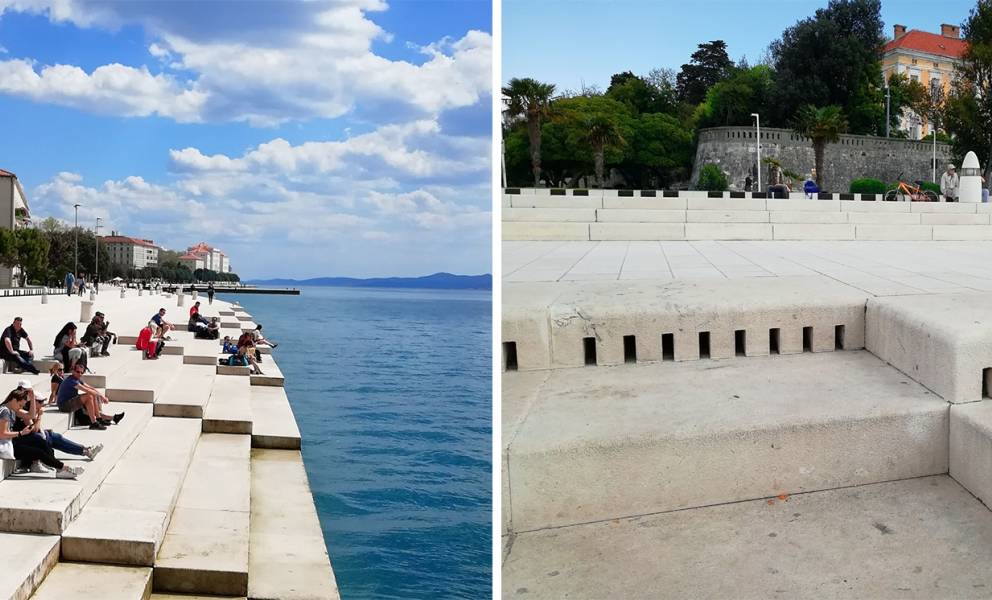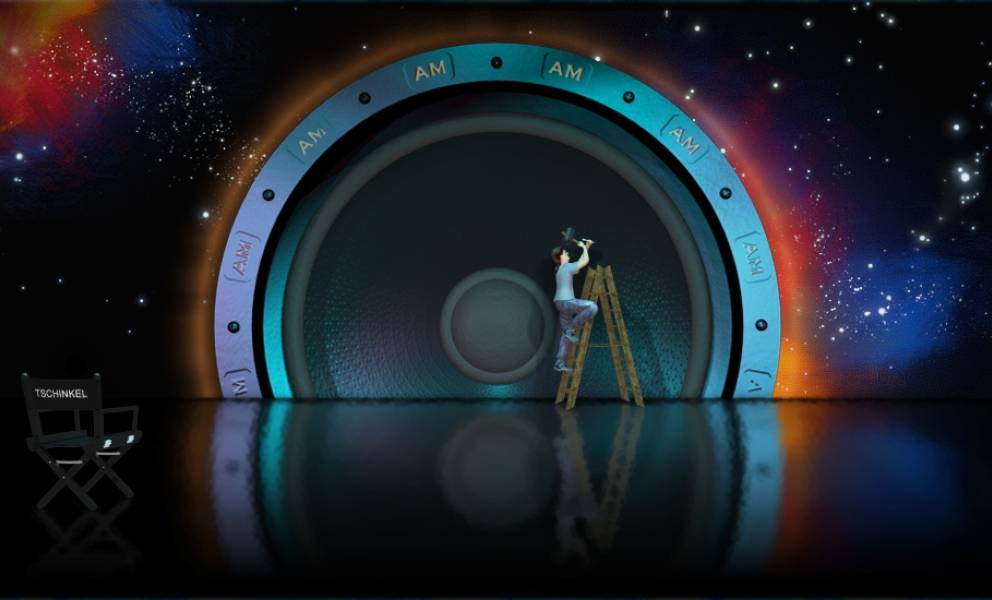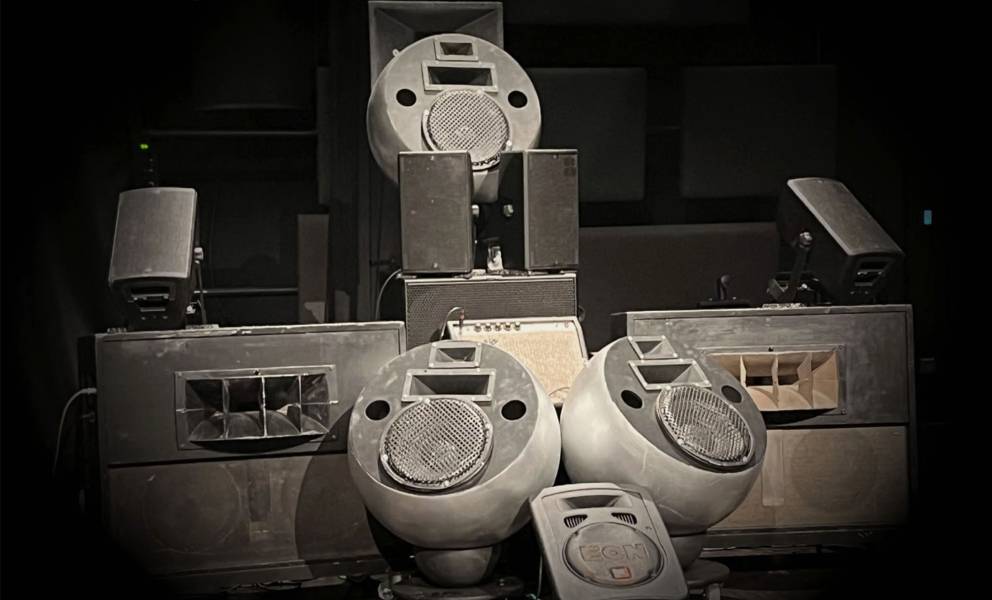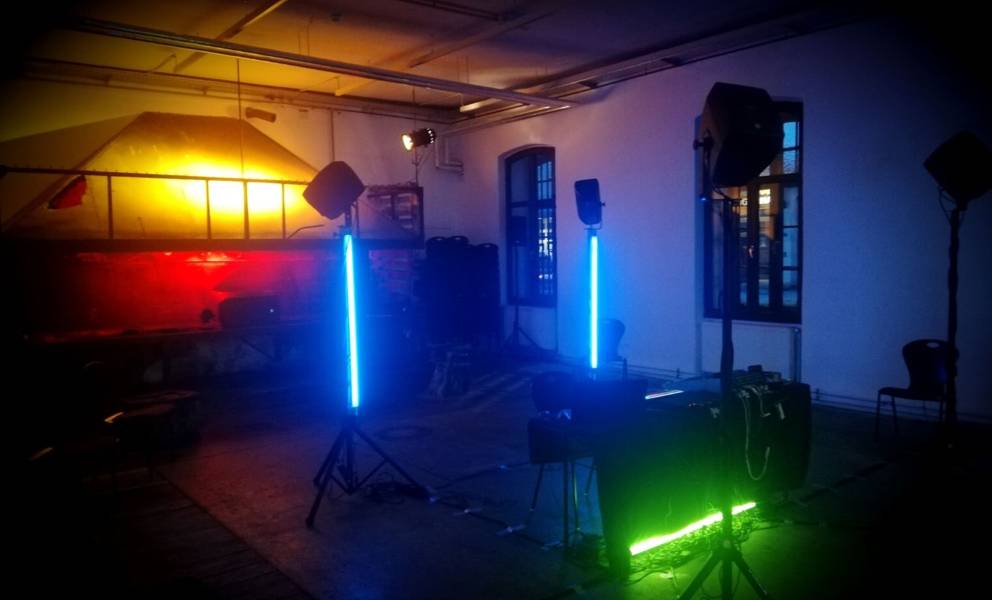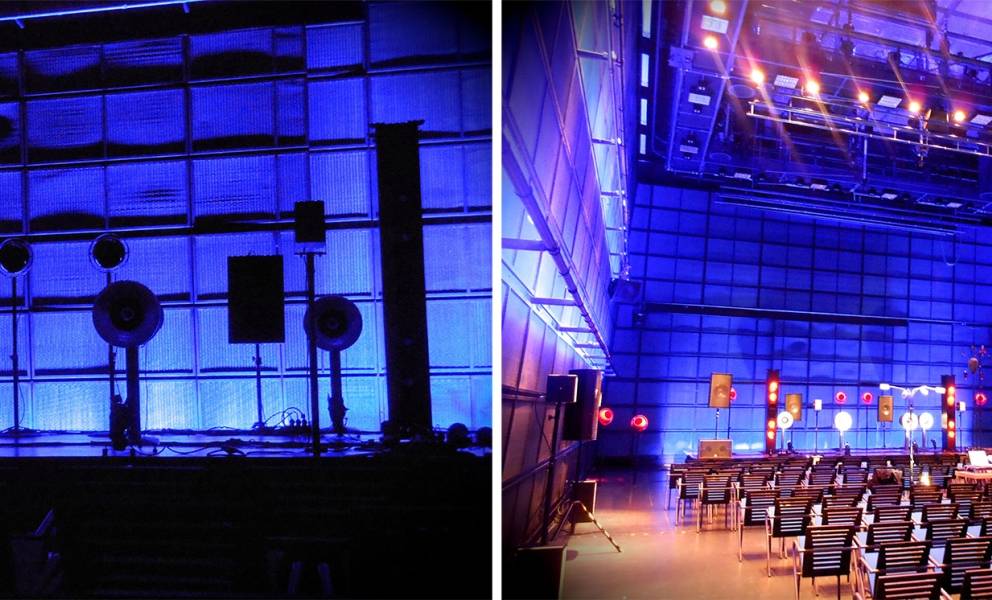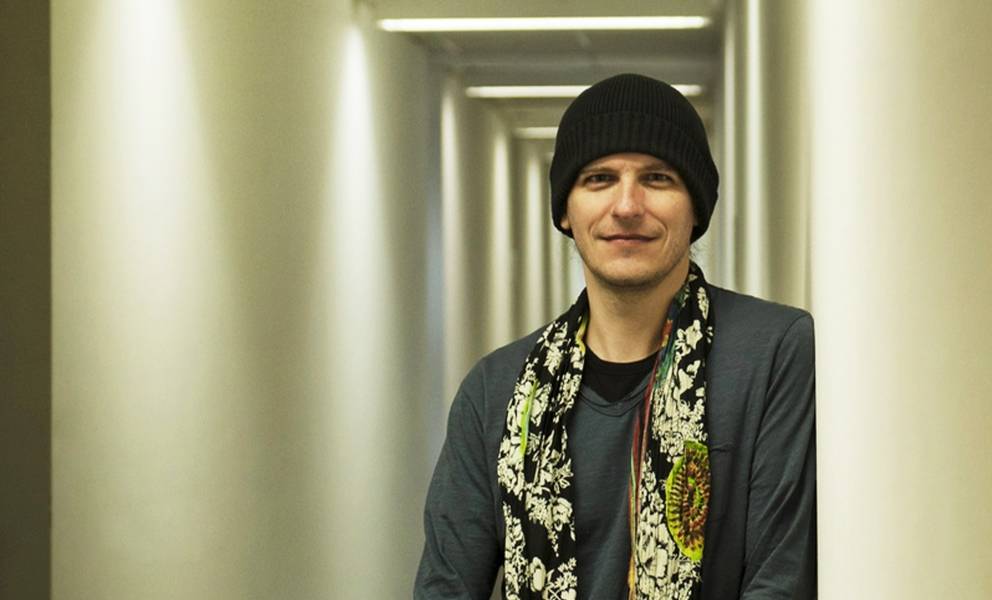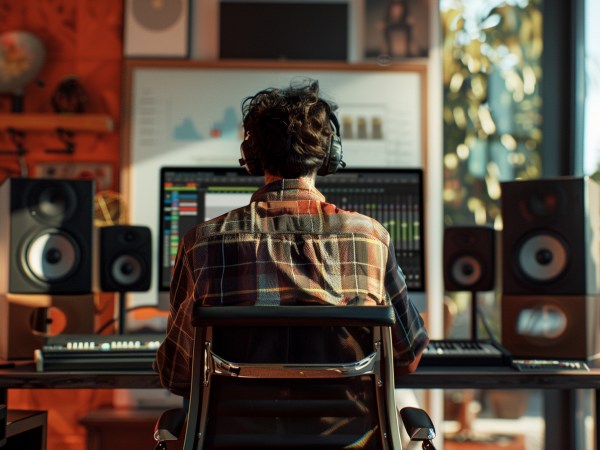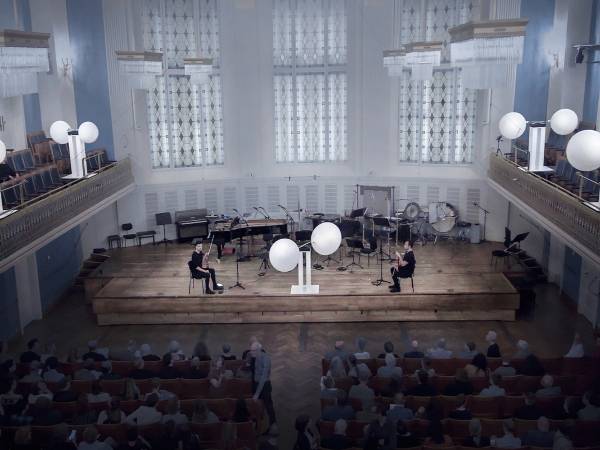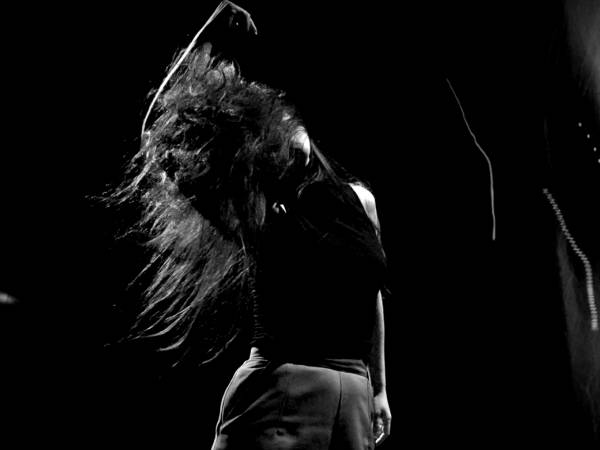13 Minuten
The following will deal with the staging of acousmatic loudspeaker music and aspects of its sound direction. Concerning these topics, a certain guiding principle applies: a musical work is only complete when it reaches the auditory canals of the audience – in the sense of the headline above, that is, only when it will get through the portals of the listeners. Paper music in a drawer or remaining sound file fragments therefore do not achieve completion, even though ideas in the form of inaudible musical concepts can definitely be exciting and stimulating, too. Nevertheless, the focus here is on the staged listening of music. The main aim is to offer a small selection of elements that can be considered and incorporated into discussion.
If we look at the conscious perception of music in its entirety, it is necessary to consider and define a wide variety of sub-areas to then pack them back into an overall package. "Pure" or autonomous listening in itself, as is sometimes demanded, can rarely or never occur. At the end, there is almost always a form of presentation or a kind of staging that creates a certain listening situation. This shows that staging begins at home and is surely often linked to visual components. Two simple examples show what even small surroundings can achieve: Karlheinz Stockhausen leaves a few seconds free before the music starts on his own CDs published by the Stockhausen-Verlag so that the listener has time to take up a comfortable listening position in an armchair before the CD player starts. Georg Friedrich Haas demands complete darkness in the concert hall for part of his ensemble piece In vain – in other words, a Black without emergency exit lighting. As it were are both rudimentary stage directions, which basically have nothing to do with the music being played, but which nevertheless belong to it overall. How extra-musical can a musical staging be? How can the extra-musical support the musical issues and where does it become musical itself?
When considering such staging issues, I think it is useful to distinguish between sound (as known as the German "Schall" with its sonic aspects), tone (as known as "Klang") and music. Personally, I expand this triad to form an auditory model that lists Schall – Sound – Klang – Sound design – and Music. Conceptual boundaries merge here, but it should help to raise awareness of our auditory world in order to enter the field of analysis. From this, measures for an adequate presentation of the respective category can be derived. The model is subordinated to the phenomenon of mediamorphosis, as it is constantly expanding through our modern (electronic and digital) forms of presentation and evolving, as we say, from "Schall" to a sonorous and musical theater. Whereas in earlier times it was only possible to experience certain music in a concert hall, today it "teleports" itself everywhere and waits to be called up and listened to in a specific context. Electroacoustic and experimental music has to deal all the more with production and reproduction technologies, i.e. also with questions of studio technology and sound reinforcement. In addition, the loudspeaker appears in many different ways. Radiation, alignment and bundling are just some of the parameters that need to be considered.
Organized Sound et al.
While Schall refers to the purely physical movement of air, which is most likely caused by perpetual natural phenomena and more or less unintentional sound generators, Sound is approached through an initial intentional cultivation step. This is perhaps only created in the mind rather than actually on site and is also psychologically distinct from noise ("Lärm"). Klang is already somewhat more structured, while Music (to quote Edgar Varèse) ultimately represents something well-organized – more so, if the latter is also to be performed in the best possible way.
Why (the Anglicism) Sound in subtle contrast to Klang in German language? Sound is something basic and something that can be experienced by the senses from the ground up, while Klang is well on the way being immersed in something aesthetically pleasing. Of course, this seems to be exaggerated and judgmental, but sports cars, for example, each have their own Sound. But the definition of non-musical or pre-musical also falls short here, because a jazz or rock musician also "has sound". In contrast to Schall, we should mention those examples that make Sound their own with the help of constructions or sound sculptures in nature: Aeolian harps, singing trees or sea organs whistle, sing or sound in the wind and within the flow of the tides. In terms of the human organism, a scream or a fist hitting the table would be analogous. Sometimes Sound can be constructed more precisely. Timbre is created on a spectral level, while the path leads to Sound design via the temporal progression. Gradually, one enters the realm of instrumentation and orchestration and approaches the musical composition that is then to be heard somewhere. In a best-case scenario, architectural spatial concepts and considerations relating to the interior are optimally applied in the sense of the respective acoustic model – sound sculptures as buildings, galleries and exhibition halls for sound art as well as concert halls and opera houses (think of Wagner's Festspielhaus or the Espace de projection at IRCAM, etc.). There is no doubt that art can also be installed in old and desolate facilities. For example, Japanoise certainly sounds more authentic in the underground than at the Elbphilharmonie. Nevertheless, the experimental arts in particular should be given respectable venues with high-quality acoustics and not always rely on short-term interim use.
Scene 1: The Sea Organ of Zadar in Croatia – On this architectural musical instrument, the waves of the sea play different tones as water pipes flow into organ pipes under the surface. The water displaces the air in the pipes and then flows back into the sea. Accordingly, this sound sculpture is constantly breathing and plays "random" harmonies depending on the inflow and outflow of water, which escape from the slots on the top step.
It's all about perception
With a technical mediamorphosis, the possibility of sound recording, and transmission takes place, whereby the loudspeaker appears today as an essential sound transducer at the end of further mediamorphoses. This opens up the field of electroacoustic music in all its forms. Initially solitary, later in pairs or groups, loudspeakers are set up in various ways, suspended or integrated into walls and contribute to certain sound reinforcement concepts due to their respective radiation characteristics. Not to forget all the portable miniature versions, which are mainly used in "non-music", i.e. in installation and performance art.
The examination of loudspeaker sounds raises many questions and led to a theoretical debate between electronic music in Cologne and musique concrète in Paris as early as the middle of the 20th century. As a quintessence, a conglomerate of theoretical ideas is available today that explains the concept of acousmatic sound and how to deal with it:
Pierre Schaeffer coined the concept of the sound object and, building on this, developed a catalogue that systematized sound events according to certain characteristics beyond traditional tonal systems and instrumental thinking. He realizes that physical units of measurement, such as measured tape lengths, do not necessarily correspond to musical perception, and thus opens up a psychoacoustic as well as a music-psychological field of research, that is linked to the speaker sound. His morphology with the parameters of form and matter (the quality of graininess) leads to further considerations, which François Bayle continues by establishing musique acousmatique: For him, sound objects, sound diagrams and sound figures are central categories of perception that deal with abstract and concrete sonority and ultimately contribute to a compositional principle of acousmatic music that also functions as a listening guide. From this Bayle derives emphatic, figurative and taxonomic listening:
Emphatic listening focuses attention on the listening itself. Listeners virtually listen to themselves while listening. In doing so, they observe their own sensations without any judgment – regardless of the form or syntax offered to them. With figurative listening, one sets out in search of a certain comprehensible narrative and, for example, juxtaposes differently recognized elements. Taxonomic listening attempts to integrate recognized objects into its own structures. A kind of (un)conscious sound object catalogue establishes relationships to one's own world of experience.
In a further development in this regard, Denis Smalley defines sound figures within his spectromorphology according to the degree to which they are replaced in or by the loudspeaker in contrast to the real sounding world and calls them surrogates. An essential component of this principle is the gesture, which takes place within the abstraction of the mediatized sound, continues to propagate within it, and makes its energetic character or characteristic energy transferable and therefore recognizable. For Smalley, the composer is the optimal listener, the one who knows and can best hear the intrinsic and extrinsic qualities of a piece and their effects.
Annette Vande Gorne combines all of these principles into so-called energy models, thereby entering the performance space. She defines four spatial categories that appear needful for the acoustic staging of acousmatic music: (1) the ambiphonic space, (2) the spatial source, (3) the spatial geometry, and (4) the spatial illusion. For the technical interpretation work at the mixing desk, she has developed 16 different spatial figures. To name a few: oscillation, rotation or the spiral.
Acousmonautics
All the aspects mentioned above are now also incorporated into my own artistic concept of "acousmonautics", which has crystallized from my musical understanding of former pop-acousmatics. Its origins can be found in the construction and operation of an experimental and performance space for acousmatic music that I created – the so-called AKUSMONAUTIKUM – from which the conceptual derivation of "acousmonautics" emerged in reference to Stanisław Lem's science fiction literature.
While I still regarded pop-acousmatics as a mastering, loudness and volume concept in the fixed media sector, which was primarily intended to have a high degree of density, both in the audio signal and in the listening space, acousmonautics developed into a form of trans art, which always provides an acousmonium for sound projection. As a relatively holistic concept, it enters into connections with other artistic disciplines, which certainly meet on a dramaturgical level. Dance, visual arts, video projections, literature and live electronics can be staged by the AKUSMONAUTIKUM in an "acousmonautic" way, so to speak. In addition to pop-acousmatic elements, such as the flooding of sound and paralyzing the perception, the metaphorical attribution that loudspeakers are stargates and thrusters has also remained. They help to catapult listeners into other dimensions. This cosmonautic play with energy-emitting stars and thrusters was then transferred to the nautical aspect of sound spatialization, which leads to a production and spatialization concept of space nesting. For acousmonautics, however, this is less a matter of the popular concept of illusion than of metaphor. Assuming that listening is not merely located in a mental sphere, but is also considered as a physical act, acousmonautics is decidedly body music, too. With their emotion bodies, "Acousmonauts" enter into a cybernetic relationship with the spatial sound body AKUSMONAUTIKUM.
However, as this original sound atelier in an old factory no longer exists, the name AKUSMONAUTIKUM has been transferred to the sound system itself, which uses different numbers of loudspeakers in different locations as required.
Scene 2: The entrance portal of Christian Tschinkel's former website ACOUSMONUMENTS shows the sound sculptor's literal concept in front of his monumental sound sculpture.
Archephony
Based on Vande Gorne's spatial figures, loudspeakers are usually placed geometrically in the AKUSMONAUTIKUM to control them accordingly. Care is usually taken to stage one of the two room diagonals as a carrier route (highway) using two powerful corner speakers, whose tunnel portals open up in the respective corners of the room. Playing sound material with variable reverberation through these speakers creates the sonic reality of a bridge to distant dimensions – virtually the grand gesture of a wormhole connection. Other combinations include three, four and more speakers. Arrays of triangles (deltas), squares (cubes) and circles around the auditorium sometimes form stylized constellations (as star constellations). Loudspeakers directed towards the ceiling help to create a spherical shape (sphere), possibly also a spiral (spiral). The sphere or hemisphere can sound ambiphonic by emitting the same sound material evenly and diffusely from all directions (background radiation). While I see this as cosmic background radiation, for Vande Gorne the analogy to light-flooded church rooms comes to mind here – or, applied to heat radiation, that of a radiator unlike a directional mono projector. The mono source (solo) thus projects decidedly from a single specific and easily locatable direction. Contrary to this drawing board construction, there is of course the possibility of a chaotic setup that does not follow any symmetry. Rarely, but nevertheless, loudspeaker bundles are used, as in November 2023 at a "mono evening" by composer Günther Rabl in the MDW's Klangtheater. Although this was symmetrical in itself, it functioned as a single monolithic body of sound (see Scene 3). Rabl often insists that there is no need for artificial (perhaps even mannered) sound movement through a new virtuosity of sound direction, as sound itself is already movement. He generates spatial localization through his multi-channel pieces and sometimes uses remote loudspeakers to provide sound from the basement. And this corresponds to the normal listening process, which always allows us to hear spatialized sounds. In this sense, the spatialized loudspeaker sound is not to be understood separately as spatialized and certainly not as the much-vaunted 3D audio. In view of the auditory spatial nesting, I therefore actually understand acousmatic spatial sound as multidimensional archephony.
Scene 3: This heap of loudspeakers was staged by sound director Wolfgang Musil to adequately perform mono works by Günther Rabl.
Visible et al.
It is obvious how much visual components affect hearing. Installation artists and stage designers know that you can also hear with your eyes. Sound sculptures can be seen to a greater or lesser extent, and interactive haptic play is often at the heart of their design. Audible, visible & tangible are characteristics that some sound art completely fulfills. The seemingly contradictory acousmatic concept of François Bayle's sound image in particular provides material for discussion on topics such as synaesthesia and media convergence. In fact, sound and music evoke mental images that often unfold their effect through metaphors. In certain respects, this corresponds to a kind of emblematics, too. Transmedia implementations of music and art in general are currently shifting more and more into the virtual reality sector. It looks like a separate branch of the music of the future is also being staged here.
Scene 4: The AKUSMONAUTIKUM in the Alte Schmiede Hallein (the "Old Forge"). A spatial and site-specific metaphorical world supports the staging of the listening room as a fairytale-like sound forge; designed together with set designer Markus Boxler, who explored references between fairytales and everyday realities at the Schmiede 2022.
Scene 5: The GRM-Acousmonium in the Media Theater of the ZKM, Karlsruhe 2011. (In 2020 it was a guest in the György Ligeti Hall at the MUMUTH, Graz as part of the Elevate Festival.)
Iconology et al.
Finally, it should be mentioned that the scenic employment to the shaped loudspeaker sound can also be interpreted through Erwin Panofsky's three-part iconological analysis scheme for art: (1) pre-iconographic, (2) iconographic and (3) iconological ways of looking and modes of listening and hearing spread out from the smallest building blocks of the music (comprehensible through the sense of phenomenon) – such as sophisticated programmed grains – via larger formal parts of the entire composition and their emphasis through the sound direction work (graspable through the sense of meaning) into the cosmos of the musical staging (comprehensible through the sense of document). A kind of hermeneutic performance practice enables a certain form of directing attention. Its spatial morphodynamics via loudspeaker control opens up world references for the listener.
In summary, it can be said that the topic of loudspeaker staging could definitely only be touched on here in a rudimentary way and above all in the form of preconditions. There are countless sound reinforcement concepts and loudspeaker constellations to play and work with, to experiment and mess around with. Classic Multi-channels, Acousmatics, Ambisonics, Dolby Atmos or the newly conceived Hyprid Audio Diffusion System (HADS) by Enrique Mendoza Mejía, which equips the auditorium of an Acousmonium also with headphones, enlarge the field of experimental and electroacoustic music staging and its psychological design. Due to its intimate closeness to the eardrum, the latter also expands the sound field of its concert audience in a special way. The object-based and spectromorphological thinking, the work with energy models and spatial figures, the virtual shifting of walls and the simultaneous spanning of spaces of different sizes turn a well-staged loudspeaker concert into a quasi-post-realistic experience.
Christian Tschinkel
Christian Tschinkel is a music theorist, composer, and sound director of acousmatic music. After studying psychology, musicology, and electroacoustic music, he mainly deals with theoretical, practical, and speculative areas of acousmatics (see "Acousmonautics"). In 2017, he founded his own experimental space, AKUSMONAUTIKUM, to embark on a "search for the fantastic" in a multi-channel setting. Tschinkel collaborates with other musicians and artists on various projects, including the Temple of Sound initiated by Günther Rabl. Since 2023, he has been a university assistant for music theory of electroacoustic and experimental music at the MDW, Vienna. His research there includes the phenomenology of archephonics.
Article topics
Article translations are machine translated and proofread.
Artikel von Christian Tschinkel
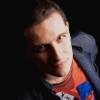 Christian Tschinkel
Christian Tschinkel 